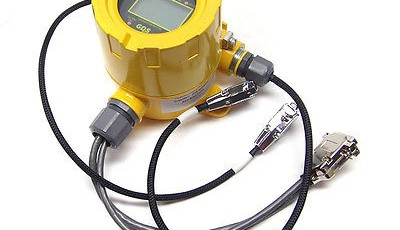In the oil and gas industry, workers face challenges and dangers on a daily basis. Because of this, companies are placing tremendous emphasis on finding gas monitoring systems suitable for industrial applications. However, due to the variety of gas monitoring equipment available, it can be difficult to know which system will work best for a specific location. For example, while one type of monitoring system may work well on an offshore rig, another might be more suitable for a manufacturing facility or refinery.
In the oil and gas industry, workers face challenges and dangers on a daily basis. Here's how to use gas detectors to keep your workplace safe.

Gas Monitoring Solutions
To ensure you make the best decision, here are some monitoring systems that work quite well in many areas of the oil and gas industry.
- Fixed-area monitoring systems
- Open-path area monitoring systems
- Portable gas monitors
- Disposable gas monitors
1) Fixed Area Monitoring Systems
Fixed area monitoring systems consist of individual point gas monitors spread throughout medium to large industrial facilities. These are designed to monitor large areas night and day. Designed and certified to be explosion-proof, the monitors provide the most accurate and timely readings. In addition, these systems can also stand up well to adverse weather conditions or harsh work environments where humidity, dust, and extreme temperatures may be present.
Pro Tip: Many gas detection systems are designed to send real-time data to your smartphone. See if the system your facility needs offers this feature.
2) Open-path Area Monitoring Systems
For applications like fencelines, refinery boundaries or other long linear areas where gas might be present, open-path gas detectors may be preferred over fixed-point detectors. Open-path detectors use a beam of infrared light to detect hydrocarbon gases. The advantage of open-path detectors is that they can operate over distances of between 30 and 100 meters, so fewer are needed to cover a given distance. However, they are more expensive than fixed-point detectors, must remain aligned precisely and cannot pinpoint a leak source.
3) Portable Gas Monitors
Portable gas monitors are designed to be carried by a worker and detect gas in the immediate vicinity. These augment fixed systems and provide peace-of-mind for workers who spend a large part of their day in confined spaces or around highly pressurized vessels that can unexpectedly leak dangerous gases. Monitoring from one to four gases, these units include alarms and are often used with data collection systems that track employee exposure to gas levels throughout the day.
4) Disposable Monitors
Disposable monitors are similar to portable monitors but are not reusable. While they may last a few years, the sensors and batteries cannot be replaced and as a result their reliability, accuracy and repeatability decline over their working life. These are most useful for plant turnarounds or other special single-use applications.
Keeping Your Worksite Safe
No matter which type of monitoring system is used at an oil or gas facility, it’s important to maintain, test and calibrate any gas detectors on a regular basis. Today’s gas detection systems are highly capable and should be considered indispensable when considering worker safety and equipment protection.
Contact us to find the right monitoring solution and control systems for your facility.

